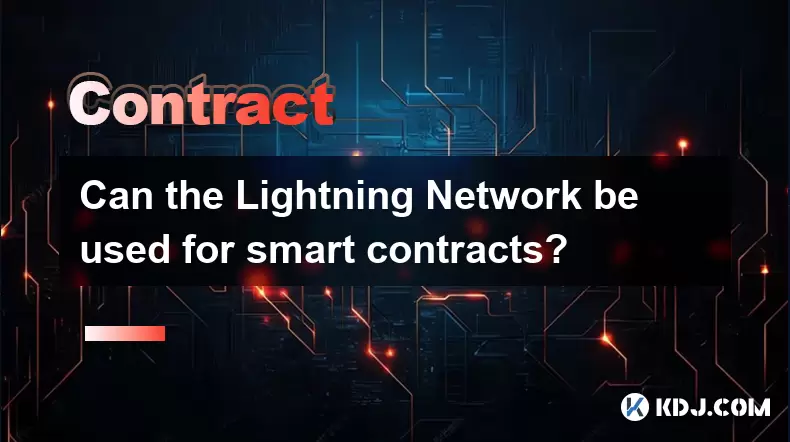-
 Bitcoin
Bitcoin $119,789.8937
2.84% -
 Ethereum
Ethereum $3,398.4973
11.56% -
 XRP
XRP $3.0928
7.47% -
 Tether USDt
Tether USDt $1.0004
0.03% -
 BNB
BNB $713.4285
4.11% -
 Solana
Solana $174.9104
8.80% -
 USDC
USDC $0.9999
0.00% -
 Dogecoin
Dogecoin $0.2120
9.64% -
 TRON
TRON $0.3067
2.00% -
 Cardano
Cardano $0.7803
7.46% -
 Hyperliquid
Hyperliquid $47.9787
1.70% -
 Stellar
Stellar $0.4739
6.54% -
 Sui
Sui $4.0601
2.50% -
 Chainlink
Chainlink $16.9821
8.15% -
 Hedera
Hedera $0.2418
6.99% -
 Bitcoin Cash
Bitcoin Cash $506.7855
3.65% -
 Avalanche
Avalanche $22.8880
6.17% -
 Shiba Inu
Shiba Inu $0.0...01455
8.44% -
 UNUS SED LEO
UNUS SED LEO $8.8157
-0.92% -
 Toncoin
Toncoin $3.1853
5.31% -
 Litecoin
Litecoin $99.4030
4.15% -
 Polkadot
Polkadot $4.2308
6.47% -
 Monero
Monero $330.6738
-1.66% -
 Pepe
Pepe $0.0...01391
12.17% -
 Uniswap
Uniswap $9.2367
2.43% -
 Bitget Token
Bitget Token $4.7635
5.75% -
 Dai
Dai $0.9999
-0.01% -
 Ethena USDe
Ethena USDe $1.0009
0.05% -
 Aave
Aave $331.7963
4.15% -
 Bittensor
Bittensor $443.9105
4.35%
How to calculate profit and loss on Bitcoin futures?
Bitcoin futures let traders bet on BTC's price without owning it, with profit/loss calculated using entry/exit prices, position size, and contract value.
Jul 14, 2025 at 09:49 pm

Understanding Bitcoin Futures and Their Nature
Bitcoin futures are derivative contracts that allow traders to speculate on the future price of Bitcoin without owning the underlying asset. These instruments are popular among both retail and institutional investors due to their leverage capabilities and potential for profit in both rising and falling markets. Understanding how these contracts work is essential before calculating profit and loss (PnL).
Each Bitcoin futures contract has a specific size, often denominated in USD or BTC. For example, some exchanges offer contracts worth $10 or $100 per tick. The value of the contract fluctuates based on the market price of Bitcoin. Traders can go long (betting the price will rise) or short (betting the price will fall). The difference between entry and exit prices, multiplied by the number of contracts and the contract size, determines the PnL.
Key Components in Calculating Profit and Loss
To calculate your profit or loss accurately, you must understand several critical components:
- Entry Price: This is the price at which you opened your position.
- Exit Price: This is the price at which you closed your position.
- Position Size: Refers to the number of contracts you traded.
- Contract Value: The dollar or BTC value per contract.
- Leverage Used: If trading with borrowed funds, leverage amplifies both gains and losses.
- Fees and Funding Rates: These reduce your net profit or increase your net loss.
The basic formula for calculating PnL is: (Exit Price – Entry Price) × Position Size × Contract Value. However, this changes slightly depending on whether you're using isolated or cross margin and whether the trade was leveraged.
Calculating PnL for Long Positions
When you open a long position on Bitcoin futures, you expect the price of Bitcoin to increase. Let’s assume you buy 5 contracts at an entry price of $30,000, with each contract valued at $10 per $1 move in price.
If Bitcoin rises to $32,000 and you decide to close your position:
- The price difference is $2,000.
- Multiply this by the number of contracts (5) and the contract value ($10).
- Your profit would be: $2,000 × 5 × $10 = $100,000.
However, if the price drops to $28,000 instead:
- The price difference is -$2,000.
- Multiply this by 5 contracts and $10 per contract.
- Your loss would be: -$2,000 × 5 × $10 = -$100,000.
Remember to subtract any fees and funding costs from your final result.
Calculating PnL for Short Positions
Shorting Bitcoin futures means you’re betting the price will fall. Using the same parameters as above, suppose you open a short position with 5 contracts at $30,000.
If the price drops to $28,000:
- The price difference is -$2,000 (but since it's a short, this becomes a gain).
- Multiply by 5 contracts and $10 per contract.
- Profit equals: -$2,000 × 5 × $10 = $100,000.
Conversely, if the price rises to $32,000:
- The price difference is +$2,000 (a loss for a short position).
- Multiply by 5 contracts and $10.
- Loss equals: $2,000 × 5 × $10 = -$100,000.
In both cases, ensure you account for transaction fees and funding payments, which may vary daily depending on the exchange and market conditions.
Impact of Leverage on Profit and Loss Calculation
Leverage allows traders to control larger positions with smaller capital. While it increases potential profits, it also magnifies losses. For example, opening a $100,000 position with 10x leverage requires only $10,000 in margin.
Let’s say you use 10x leverage on a $30,000 entry with 5 contracts:
- Your total exposure is still calculated the same way.
- However, a small adverse price movement can trigger a liquidation if your margin is insufficient.
For instance, a 5% drop in price could wipe out your entire margin if leverage is high and stop-loss levels are not set properly. Always consider liquidation price when factoring in risk.
Some platforms automatically deduct maintenance margin from your available balance, so it's crucial to track equity changes in real-time.
Frequently Asked Questions
Q1: How do I calculate PnL in BTC terms instead of USD?
To calculate PnL in BTC, divide the USD profit or loss by the exit price. For example, if your profit is $10,000 and the exit price is $30,000, your profit in BTC is $10,000 / $30,000 ≈ 0.333 BTC.
Q2: What happens if I partially close my position?
You can close part of your position while keeping the rest open. Each partial close is calculated separately using the same formula. Your remaining open position continues to fluctuate based on the current market price.
Q3: Are unrealized PnL calculations different from realized ones?
Yes. Unrealized PnL refers to gains or losses on open positions, while realized PnL occurs when you close a position. Unrealized PnL is theoretical until the position is closed.
Q4: Do funding rates affect PnL even if I don’t close my position?
Absolutely. Funding rates are periodic payments exchanged between long and short traders on perpetual futures. These are applied every 8 hours and can either add to or reduce your unrealized PnL.
Disclaimer:info@kdj.com
The information provided is not trading advice. kdj.com does not assume any responsibility for any investments made based on the information provided in this article. Cryptocurrencies are highly volatile and it is highly recommended that you invest with caution after thorough research!
If you believe that the content used on this website infringes your copyright, please contact us immediately (info@kdj.com) and we will delete it promptly.
- Tornado Cash, Exploits, and Roman Storm: A New York Minute on Crypto's Legal Storm
- 2025-07-17 04:30:13
- Inflation Data Sparks Altcoin Season: What's Happening in the US Economy?
- 2025-07-17 04:30:13
- Chainlink's Price Surge: Riding the Liquidity Wave to New Heights?
- 2025-07-17 03:50:13
- Blockchain to the Rescue: Thwarting Location Spoofing in the Age of Deception
- 2025-07-17 03:50:13
- Shiba Inu: Onchain Data Reveals Resistance Zones Blocking the Path to $0.000035
- 2025-07-17 04:10:14
- DOGE Price Watch: Support Levels and Crypto Market Sentiment
- 2025-07-17 04:10:14
Related knowledge

What is a stablecoin-margined contract vs a coin-margined contract?
Jul 15,2025 at 06:36pm
Understanding the Difference Between Stablecoin-Margined Contracts and Coin-Margined ContractsIn the world of cryptocurrency derivatives, margin plays...

How to analyze volume profile for Bitcoin futures?
Jul 17,2025 at 01:21am
Understanding Volume Profile in Bitcoin Futures TradingVolume profile is a crucial analytical tool used by traders to assess the distribution of tradi...

How to backtest a Bitcoin futures trading strategy?
Jul 15,2025 at 11:35am
Understanding Bitcoin Futures TradingBitcoin futures trading involves contracts to buy or sell Bitcoin at a predetermined price and date in the future...

Psychology of trading Bitcoin contracts
Jul 13,2025 at 02:50am
Understanding the Emotional Rollercoaster of Bitcoin Futures TradingBitcoin contract trading, especially in the form of futures, introduces a high lev...

Can the Lightning Network be used for smart contracts?
Jul 14,2025 at 11:28pm
Understanding the Lightning Network's Core FunctionalityThe Lightning Network is a second-layer solution built on top of blockchain protocols like Bit...

How does macroeconomic news affect Bitcoin futures prices?
Jul 15,2025 at 04:56pm
Understanding the Relationship Between Macroeconomic News and Bitcoin FuturesBitcoin futures are derivative contracts that allow traders to speculate ...

What is a stablecoin-margined contract vs a coin-margined contract?
Jul 15,2025 at 06:36pm
Understanding the Difference Between Stablecoin-Margined Contracts and Coin-Margined ContractsIn the world of cryptocurrency derivatives, margin plays...

How to analyze volume profile for Bitcoin futures?
Jul 17,2025 at 01:21am
Understanding Volume Profile in Bitcoin Futures TradingVolume profile is a crucial analytical tool used by traders to assess the distribution of tradi...

How to backtest a Bitcoin futures trading strategy?
Jul 15,2025 at 11:35am
Understanding Bitcoin Futures TradingBitcoin futures trading involves contracts to buy or sell Bitcoin at a predetermined price and date in the future...

Psychology of trading Bitcoin contracts
Jul 13,2025 at 02:50am
Understanding the Emotional Rollercoaster of Bitcoin Futures TradingBitcoin contract trading, especially in the form of futures, introduces a high lev...

Can the Lightning Network be used for smart contracts?
Jul 14,2025 at 11:28pm
Understanding the Lightning Network's Core FunctionalityThe Lightning Network is a second-layer solution built on top of blockchain protocols like Bit...

How does macroeconomic news affect Bitcoin futures prices?
Jul 15,2025 at 04:56pm
Understanding the Relationship Between Macroeconomic News and Bitcoin FuturesBitcoin futures are derivative contracts that allow traders to speculate ...
See all articles

























































































